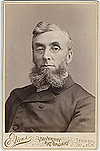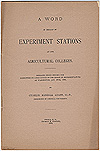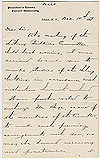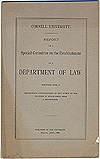Symbols of the University | The Cornell Public Library | Cornell’s Twelve Presidents | | Andrew Dickson White, President, 1866-1885 | | Charles Kendall Adams, President, 1885-1892 | | Jacob Gould Schurman, President, 1892-1920 | | Livingston Farrand, President, 1921-1937 | | Edmund Ezra Day, President, 1937-1949 | | Deane Waldo Malott, President, 1951-1963 | | James Alfred Perkins, President, 1963-1969 | | Dale Raymond Corson, President, 1969-1977 | | Frank Howard Trevor Rhodes, President, 1977-1995 | | Hunter Ripley Rawlings III, President, 1995-2003 | | Jeffrey Sean Lehman, 2003-2005 | | David J. Skorton, 2006 | Inaugurating the Presidents |
| Cornell’s Twelve Presidents Charles Kendall Adams, President, 1885-1892 When White announced his intention to retire, the Trustees selected Charles Kendall Adams to succeed him. Adams continued to build upon White’s legacy. His achievements included major changes in the organization of the university. Requirements for admission and for degrees were strengthened, courses of study were improved, and faculty research and publications were encouraged. In 1886, a College of Law was created whose professors met separately. Adams lobbied actively in Washington for the Hatch Act, which provided for the establishment of agricultural experiment stations in connection with land-grant colleges. The Summer School became official in 1892. New buildings constructed included Barnes, Lincoln, Boardman, and Morse Halls and, perhaps the most important structure built during this period, the University Library. During Adams’ administration, student enrollment increased from 573 to 1537; tuition rose from $75 to $100; and the income of the University grew from about $300,000 to about $400,000. In 1889, Cornell was regarded as the third American university in wealth and income, after Columbia and Harvard.
Charles Kendall Adams was born in Derby, Vermont in 1835. His family moved to Denmark, Iowa in 1856. He had only an elementary school education until he was twenty-one years old. He worked his way through the University of Michigan, where he studied with Andrew Dickson White. He taught history at the University of Michigan, until his appointment in 1885 as President of Cornell. As a result of major conflicts over honorary degrees and control of faculty appointments, Adams was forced to resign in 1892. He subsequently became President of the University of Wisconsin, a position he held until his death in 1902. << Prev | Next >> |  + +
Charles Kendall Adams
Charles Kendall Adams, 1888.
Albumen print cabinet card photograph by E. Evans of Ithaca, NY. 
 + +
The 1886 Cornell University Faculty
Charles Kendall Adams stands in the front row of the 1886 Cornell University faculty members. 
 + +
Experiment Stations
A Word in Behalf of Agricultural Stations, an address before the Committee on Agriculture of the House of Representatives. Washington, D.C., January 28, 1886. 
 + +
Andrew Dickson White’s plan for library sites.
Andrew Dickson White’s plan for library sites was included in a letter from White to Charles Kendall Adams, March 11, 1886. The plan suggested: (1) proposals for additions to McGraw Hall; (2) the preferred site on the east side of the Quadrangle; (3) an alternative site on the south side of the Quadrangle. At the southwest corner of the Quadrangle is a fourth alternative next to which White notes, “Various methods of arranging this.” 
 + +
Letter from C. K. Adams to William Henry Miller
Letter from Charles Kendall Adams to William Henry Miller, December 15, 1887 (dictated)
“At a meeting of the Library Building Committee, held last evening, it was decided to ask you to make studies of the library building, in accordance with instructions herewith enclosed.”
William Henry Miller, a noted Ithaca architect, was selected to build the University Library. Buildings for which he was responsible include the Andrew Dickson White House, Barnes Hall, Stimson Hall, and Risley Hall, as well as a number of churches and homes in Ithaca. He prepared plans for improving the south entrance to the University at Cascadilla Gorge, designing a new roadway closer to the gorge bank, an entrance gate at the end of Eddy Street, and a new stone-arched bridge across the gorge. 
 + +
A new College of Law
In 1886, a College of Law was created whose professors met separately. 
|
